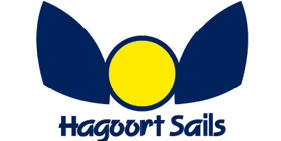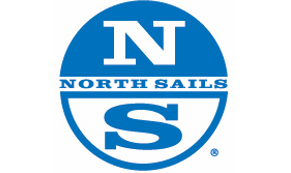Maverick's Fastnet Race - Episode 2
3 september 2017 - Within a minute I heard a ‘clunk’ and Maverick slowly turned to windward and luffed. I yanked the wheel and steadied her. A clunk on a boat is never a good sound, and by definition something decidedly mechanical. A logical, technical mind, when ..........
sufficiently fatigued, throws reasoning to the wind and hope springs eternal. I pushed various remote control buttons, and then tried the classic Microsoft solution by powering the autopilot off and then on. This did not yield a miraculous cure, and with dread and a fair idea of the issue I opened a stern locker and peered in. The autopilot drive motor lay motionless on the bottom of the hull, the remnants of a connector pin on the end, and a gap in the steering quadrant where the motor once connected.
I let Patrick get in a short rest, and when he popped his head up next, before I could tell him the news, he asked ‘Boterham?’ (Sandwich?). This would become the second most repeated word over the coming days, but a good reminder that eating well and saving energy would pay dividends later.
The 10mm (1/2”) steel connector is designed for the high torque and repetitive load, and we did not carry a spare. We decided to try lashing it in place with extremely strong Dyneema line, and I slowed and steadied the helm as Patrick leaned into the confined compartment, angled the motor in place and made a secure lashing. We tested it briefly and decided to use it for sail changes and emergencies, until we could figure a better repair. Patrick looked astern and then announced another problem – weed on the rudder.
No doubt it had sapped some speed and Patrick grabbed the boat hook - a still-essential 18th century tool carried on every 21st century race boat. Unlike the grass mats found in the Ijsselmeer, long ribbons of tough brown weed trailed a few meters behind the boat, but too deep to catch with the hook. We heeded up to the wind and backed the jib, stalled the boat, and Patrick grabbed and pulled off the alien tentacles strand by strand. Again painful to watch a few nearby boats pass by and sail ahead, but we enjoyed better speed once it was cleared.
After St. Albans we tripled down on our inshore tactics hash and fought strong tide by Portland Bill to gain some later tide relief closer to the coast. We joined a Mad Max mix of race boats from across classes, united by the scars of a difficult early race but stubborn enough to head into the bay to eke out some consolation. Mav sailed strongly in a moderate breeze and easy seas, and on a cloudless night a rising full moon illuminated our sails and cockpit like a spotlight shining from behind. More than 500 miles lay ahead (and several pages more for those of you still with us), time to appreciate the time and place, and to slowly catch up with our class.
We took turns hand steering through the next day and evening, making steady progress and balancing the increasingly dated computer routing with our reckoning of wind and tides. Passing Salcombe we tacked into the bay, trying to gain relief for several hours of foul tide (tide running against). In theory our speed and timing would give us a nice boost out of the bay by Lizard Point and along the headland as the tide turned favorable.
Contrary to our increasingly less trusted routing, in early afternoon the wind dropped to 10 knots, then to 5, and several hours later fell away to a whisper. With far too much practice this season trying to keep Mav moving in light airs we kept her inching ahead while others struggled. One nearby boat slowly rotated around, and with apparent wind from the tide, sailed with a few knots speed in the wrong direction. In the twilight a friend on a nearly boat (Fandango) greeted us across the still flat water, and as the tide turned we ghosted ahead with them toward the headland. After sunset a near full moon rose, and a breeze filled in. We picked up speed, boosted further by the strengthening tide run along the headland.
We alternated helming every few hours, and perhaps sensing our fatigue and disappointment dolphin periodically swam along side, or raced out ahead. They are always a welcome distraction, and a true wonder. We faced another tactical decision as we approached the Scylly islands off Land’s End – whether to pass south, north or between exclusion zones around the shipping lanes. Two years earlier we headed north with the tide but stalled in a wind hole, while the forecast just before the start called for higher winds and a very bumpy Celtic Sea. We elected to ride the favorable tide and sail below the first exclusion zone, then angle north of the Islands. Just as we cleared the zone we crossed tacks with J-Quattro; having comfortably led them early on we recognized we had lost further ground in Salcolmbe Bay.
An earlier gale and day after day of low pressure systems had built the Celtic Sea into a big, irregular mess, with regular small breakers and occasional swells over 4m, and everything else in between. Wind held in the mid 20s and we put a reef in the mainsail, and worked hard to maintain speed and pointing as we pounded upwind in the darkness. Maverick boasts a large rudder, with more control in most condition, but with a small wheel and heavy steering loads in big seas. We shortened our helming stints to 90 minutes, not enough time for a decent rest below but enough to rest aching shoulders and backs. Periodically we fell off a wave and slammed into the trough, and in each case I habitually utter a version of the F-word. Bigger the slam, sharper the epithet. After a particularly bumpy patch Patrick’s tousled head appeared in the companionway – Broodje? In the last hours it had been relegated to the second most uttered word on Maverick, but even in these conditions a sandwich break was always welcome.
Through the night the VHF radio crackled with emergency calls, retirements and Coast Guard actions – dismasting, rig problems, a boat with structural issues. A reminder of the fragility of our craft and our mortality, and though impeded by a failed autopilot, other boats endured far tougher problems.
One of the drawbacks of doublehanded hand-steering is that the near-exhaustion induces deep sleep, and it is nigh impossible to roust your partner from his slumbers without going below. After one hard stint I tried shouting and stamping, before finally leaving the wheel, jumping below, and shaking poor Patrick until he opened his eyes to see my wild-eyed mug. This caused quite a fright, or perhaps it was caused by shuddering and flapping of sails as ghost ship Maverick rounded up.
The following afternoon the winds and seas eased, just as we approached Fastnet Rock. We again sailed in a rag-tag group of boats – the tail end of the big boat IRC1 class, a smattering of boats in our IRC 2 class, and a number of smaller IRC 3 boats. Any disappointment in standings is forgotten as we approach ‘The Rock’ , the iconic jagged mount with a century-old lighthouse standing watch. Close enough to the emerald green coast of Ireland to smell the peat and Guinness, we noted a few boats drifting in a windless patch closer in, and elected to round it a quarter mile out. In other circumstances we may have been deflated to lie next to our Dutch doublehanded friends on the smaller J-109 Firestorm, but we recognized they were sailing a superb race and we enjoyed calling out to them and taking a few photos as they passed by the Rock.
An Old-School Maverick Fastnet (almost as long as the race...) Episode 1
31 augustus 2017 - Every two years it begins with pageantry and the sharp reports of bronze starting cannons, hundreds of colorful boats gliding gracefully on a Sunday summer morning, cheering spe... Lees verder
An Old-School Maverick Fastnet - Last Episode
4 september 2017 - After rounding we were set for a long downhill (downwind) run back to Land’s End, and we readied the smaller running spinnaker. The autopilot held momentarily before the lashing... Lees verder













